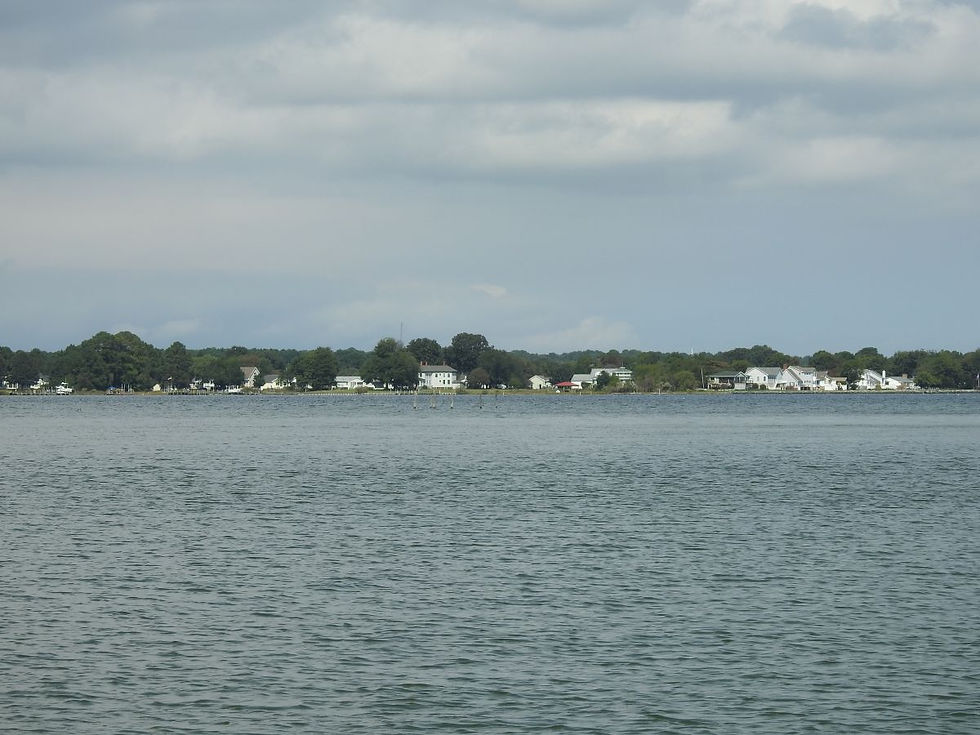
The weather was predicted to be a bit windy, so instead of kayaking, I decided to drive up to the Northern Neck of Virginia and check out some nature preserves.
The Virginia Department of Conservation and Recreation, which is the department that manages the state parks, also manages a system of Natural Area Preserves under its Natural Heritage division. The Natural Area Preserves System was established in the late 1980s to protect some of the most significant natural areas in the Commonwealth. This system now includes 63 dedicated natural areas totaling 56,782 acres. Not all of them are open to the public since the main purpose of them is to preserve significant habitats. In some cases, the preserves support the habitat of federally threatened species.
Today, I visited two of them on the southern part of the Northern Neck in Northumberland County. They are both on the western shore of the Chesapeake Bay and a subjected to massive erosion each year that shapes (and reshapes) their shorelines. You can see some of that in the aerial maps below. Hughlett Point is 204 acres. And Dameron Marsh is 316 acres.
At Hughlett Point, there is a small parking area just inside the woods. A dirt trail leads east through the woods toward the beach. There are short boardwalks over some low areas through the woods. The trail then turns southeast and parallels the shoreline. (A spur heads east to the beach completing the beach loop.) About a third of the way toward Hughlett Point, there is a short wooden walkway out to a marsh observation platform. The trail continues southeast to another observation platform and then ends after about 0.75 miles at the white, sandy beach.
It's worth noting on the wooded trail that despite it being October, the mosquitoes were out in full force. Insect repellent definitely a requirement. Once I got to the beach, the mosquitoes were gone. There were some tiny, tiny, tiny frogs along the trail in the woods. They needed to be eating some of the mosquitoes!
The beach, which is not very wide, was full of large pieces of driftwood. There was also a fair amount of seaweed on the sand. The water was green and very clear.
There is an impoundment (saltwater, I'm assuming) inside the beach which had a large number of shore birds chasing prey. I was able to get some shots of them in various poses. One of the herons was repeatedly doing some sort of tiptoe dance on a sandbar. He did get a fish, though, so I guess it worked!
Dameron Marsh received its name from Lawrence Dameron of Suffolk, England who purchased this property in 1655. It became part of a plantation called Guarding. The road leading to the preserve still bears that name. The property was acquired by the state in 1998. As I was driving to the location, I was sure that I was going the wrong way despite the fact that I was following the GPS map. The road went from paved, to barely paved, to gravel, to barely gravel. When I passed a guy running a tractor in a farm field and the GPS said to turn, i thought for sure that I was on private farm road, but I kept going and the road eventually lead right to the preserve.
There's a small parking area along the road and to the east from there, a dirt and gravel path (0.2 mile) leads to a wooden marsh observation point. From this vantage point, you can see the marsh inhabitants and in the far distance, the Chesapeake Bay. Going west from the parking area, a short trail leads to a beach where you can launch kayaks and canoes (which I didn't do this time). Heading due north from the kayak launch beach along the old road, you can access the north-facing shoreline and its white sand beach. Just before the beach, there used to be an old house. Lining the road were persimmon trees. The persimmons looked very ripe, but you have to wait until the first frost to eat them or the astringency will be unbearable.
In between the two natural areas, I also passed an old restored one-room school named the Shiloh School. It is being restored by the Northumberland Preservation society. The school was originally built by the men in the community and was used from 1906 to 1929. It provided the only education for generations of Northumberland residents. Its first teacher was Miss Jessie Dew Ball who would become the third wife of Alfred I. DuPont. Miss Ball was educated at the Farmville Normal School, which would become Longwood University. Her husband, who was 20 years her senior, was part of the influential DuPont family. She became very active in philanthropy.
There are a bunch of other nature areas and parks that I want to visit on the Northern Neck, so I will definitely be back to this area.
Virginia Northern Neck Natural Areas
Hughlett Point Natural Area




































Dameron Marsh Natural Area








































Shiloh School













